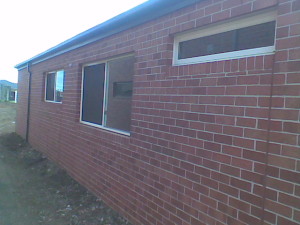Window Size
Building Code Rules on Size
 The Building Code of Australia requires you to have at least 10% of the floor area as windows with at least 5% of the floor area being able to be opened.
The Building Code of Australia requires you to have at least 10% of the floor area as windows with at least 5% of the floor area being able to be opened.
If you go in many show houses you will see windows that are much bigger, typically 40 – 50% of the floor area.
They do this to give a light airy feel to the house.
In reality, for most modern house on a typical size blocks you could finish up with floor to ceiling windows looking directly at a fence!
Why Have Smaller Windows?
- Well glazing is an expensive building element. You may save money on a custom build by having smaller windows. Even with project homes builders will often reduce the size of windows as a no cost option.
- Single glazing transfers over 20 times as much heat as a modern brick veneer wall. With the step up in cost to double glazing you will still transfer more than 10 times the heat through windows compared with a brick wall.
- Windows that go down to the floor restricts where you can put furniture.
If you stick to sensible glazing ratios and get away from floor to ceiling glazing by raising sill heights, you can reduce the area of glazing considerably.
By considering the positioning of glazing and room layout relative to external shading elements you do not really need to compromise on natural light.
The surprising thing is that if you follow these principles you can get a more sustainable house and save on heating and cooling.
If you also want the added benefits of double glazing you will also save money as the smaller windows will be cheaper. (See the following link for more information: Smaller Windows or Double Glazing?)
For myself I have tended to aim for glazing around 20-25% of floor area in South facing rooms and around 40% in North facing rooms.
West or East facing windows are avoided, or if there is no alternative, minimised.
Did you change window sizes on your new house?
See Insulation for similar Posts
For Posts about Green Building see Sustainability